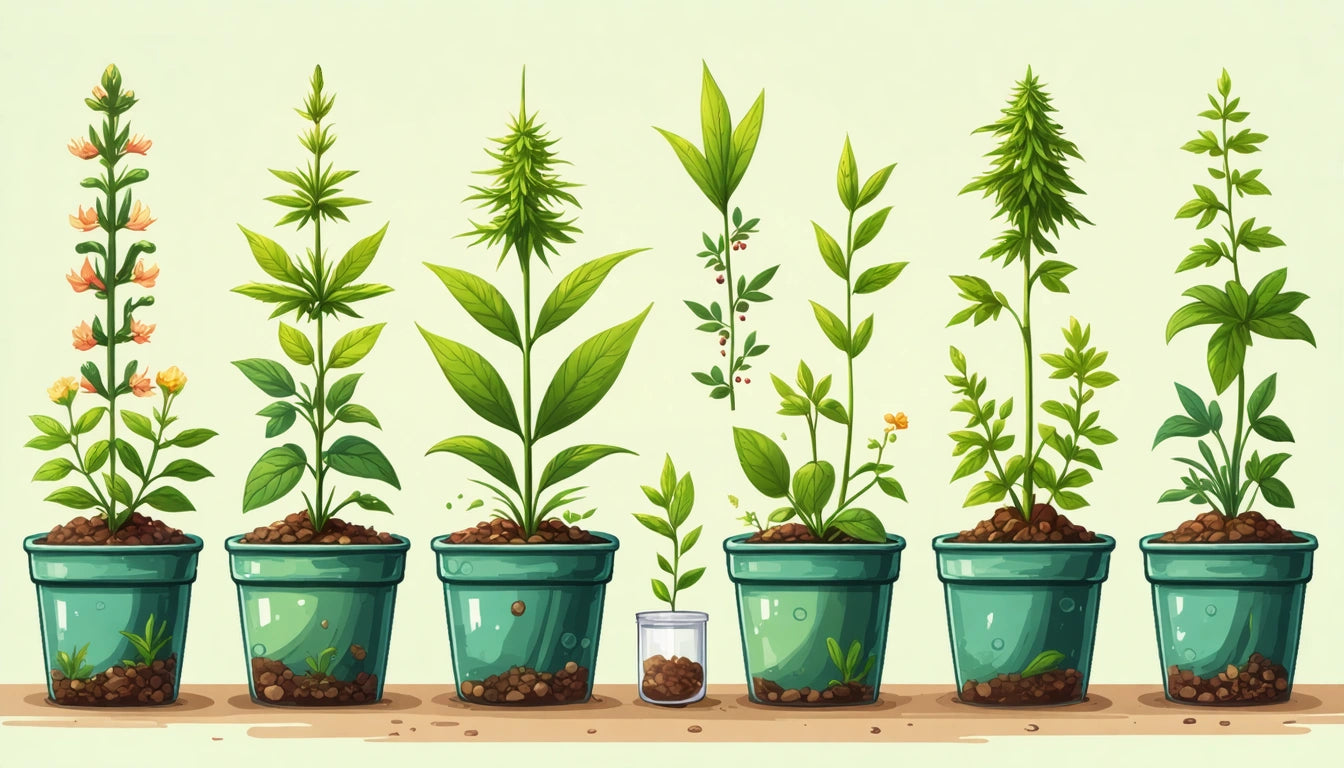Table of Contents
- Understanding Plant Reproduction Fundamentals
- Traditional Breeding Methods for Plant Improvement
- Crossbreeding Techniques for Creating Hybrid Plants
- Tissue Culture Propagation: Advanced Reproduction Method
- What Flowering Plants Need to Reproduce Successfully
- Cannabis-Specific Breeding Considerations
- Plant Breeding Innovations and Future Applications
Comprehensive Guide to Plant Breeding and Reproduction Techniques
Plant breeding represents one of humanity's oldest sciences, evolving from intuitive selection to sophisticated genetic manipulation. Whether you're interested in ornamental flowers, food crops, or cannabis cultivation, understanding how to breed plants effectively can lead to improved varieties with desirable traits. This guide explores various reproduction techniques from traditional crossbreeding to advanced tissue culture methods.
Understanding Plant Reproduction Fundamentals
Before attempting to breed plants, it's essential to understand their natural reproduction mechanisms. Plants reproduce either sexually (involving pollen and ovules) or asexually (through vegetative propagation).
Sexual Reproduction in Plants
Sexual reproduction involves the fusion of male and female genetic material, creating offspring with unique genetic combinations. This process requires:
- Pollination (transfer of pollen to stigma)
- Fertilization (union of male and female gametes)
- Seed development
- Germination
For those interested in growing from seeds, this comprehensive seed growing guide provides detailed instructions for successful germination and early growth.
Asexual Reproduction Methods
Asexual reproduction creates genetic clones of the parent plant, preserving desirable traits. Common methods include:
- Cuttings
- Division
- Layering
- Grafting
- Tissue culture
Traditional Breeding Methods for Plant Improvement
Traditional breeding involves selecting plants with desirable characteristics and encouraging them to reproduce. This approach has been used for thousands of years to develop improved crop varieties.
Selection Breeding
Selection breeding involves identifying plants with preferred traits and using them as parents for the next generation. This method works well for traits controlled by a small number of genes.
How to Breed Flowers for Specific Traits
If you're wondering how to breed flowers with specific colors, sizes, or fragrances, the process typically involves:
- Selecting parent plants with desired characteristics
- Manually transferring pollen between flowers
- Protecting pollinated flowers from unwanted pollen
- Collecting and growing seeds
- Evaluating offspring for desired traits
For those interested in flower cultivation specifically, this guide to cultivating flowers provides valuable insights applicable to both ornamental and cannabis varieties.
Crossbreeding Techniques for Creating Hybrid Plants
Crossbreeding combines the genetic material of two different plant varieties to create offspring with traits from both parents. This technique is fundamental to modern plant improvement.
When working with cannabis specifically, many cultivators use specialized storage solutions for preserving genetic material between breeding cycles, which helps maintain seed viability and protect pollen from contamination or degradation.
Steps for Successful Plant Crossbreeding
- Select parent plants with complementary traits
- Identify and isolate reproductive structures
- Collect pollen from the male/donor plant
- Apply pollen to the female/recipient plant
- Label and monitor pollinated flowers
- Harvest seeds when mature
- Grow and evaluate offspring
For a detailed approach to creating your own hybrid varieties, this crossbreeding guide offers specialized techniques and tips for success.
Tissue Culture Propagation: Advanced Reproduction Method
How to Grow a Tissue Culture Plant
Tissue culture represents one of the most advanced plant reproduction methods, allowing for rapid multiplication of disease-free plants. The basic process includes:
- Selecting healthy parent material
- Sterilizing plant tissue samples
- Placing samples on nutrient medium
- Maintaining sterile growth conditions
- Transferring to rooting medium
- Acclimatizing plantlets to normal growing conditions
This method is particularly valuable for rare varieties or when trying to preserve specific genetic traits without variation.
What Flowering Plants Need to Reproduce Successfully
Understanding what flowering plants need in order to reproduce effectively is crucial for successful breeding. Key requirements include:
- Appropriate light cycles (photoperiod)
- Optimal temperature ranges
- Adequate nutrition
- Proper humidity levels
- Pollination vectors (wind, insects, or manual pollination)
- Protection from environmental stressors
For cannabis specifically, controlling these environmental factors is critical during the flowering stage. This guide to growing cannabis naturally explores these requirements in detail.
Cannabis-Specific Breeding Considerations
Cannabis breeding presents unique challenges and opportunities due to the plant's dioecious nature and complex cannabinoid profiles.
Autoflowering vs. Photoperiod Breeding
Cannabis breeders often work with both autoflowering and photoperiod varieties:
- Autoflowering plants flower based on age rather than light cycles
- Photoperiod plants require specific light/dark periods to trigger flowering
Each type requires different breeding approaches, as detailed in this guide to autoflowering cannabis.
Cloning Cannabis Plants
Cloning represents one of the most popular methods for preserving cannabis genetics. This process creates identical copies of a mother plant, ensuring consistency in production. For detailed steps, this comprehensive cloning guide provides valuable techniques.
Plant Breeding Innovations and Future Applications
The field of plant breeding continues to evolve with new technologies and approaches. Modern innovations include:
- Marker-assisted selection for targeted trait improvement
- CRISPR gene editing for precise genetic modifications
- High-throughput phenotyping for rapid trait assessment
- Computational breeding models to predict offspring characteristics
These advanced techniques are complementing traditional breeding methods, accelerating the development of plants with enhanced characteristics for agricultural, medicinal, and ornamental purposes.
Whether you're breeding ornamental flowers, food crops, or cannabis varieties, the fundamental principles remain consistent. By understanding plant reproduction biology and applying appropriate techniques, you can develop unique varieties tailored to specific needs and growing conditions.











Leave a comment
All comments are moderated before being published.
This site is protected by hCaptcha and the hCaptcha Privacy Policy and Terms of Service apply.